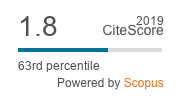Teaching methods for increasing the participations of students: Innovative dynamics games
Abstract
Purpose: This paper analyses new dynamics as teaching methodologies in the context of the degrees adapted to the EHEA. The aim of this study is double: to assess whether there is greater involvement in seminars with these new dynamics and to test if learning also experienced changes.
Design/methodology/approach: To experiment with the introduction of innovative dynamic games in an introductory course in accounting. These new dynamics are applied during the academic year 2010-11 in the UPF. The design, implementation and evaluation of the methodology devised have followed three stages: 1) Game Design and adequate dynamic; 2) To test the games; 2) Implementation during the course.
Findings: The results show that students value positively those dynamics improving their learning and creating greater involvement.
Research limitations/implications: There are some contradictory results regarding the knowledge gained by the students. Another area to be explored relates to the skills that the teacher must have in order to manage this type of dynamics.
Originality/value: In an introductory level of the Financial Accounting course the most common dynamics is solving exercises. Due to the nature of matter, these are closed so they not provoke discussion among students. However, you can use activities that allow greater participation, especially through dynamics or games. This paper shows that.Keywords
DOI: https://doi.org/10.3926/ic.454
This work is licensed under a Creative Commons Attribution 4.0 International License
Intangible Capital, 2004-2025
Online ISSN: 1697-9818; Print ISSN: 2014-3214; DL: B-33375-2004
Publisher: OmniaScience








